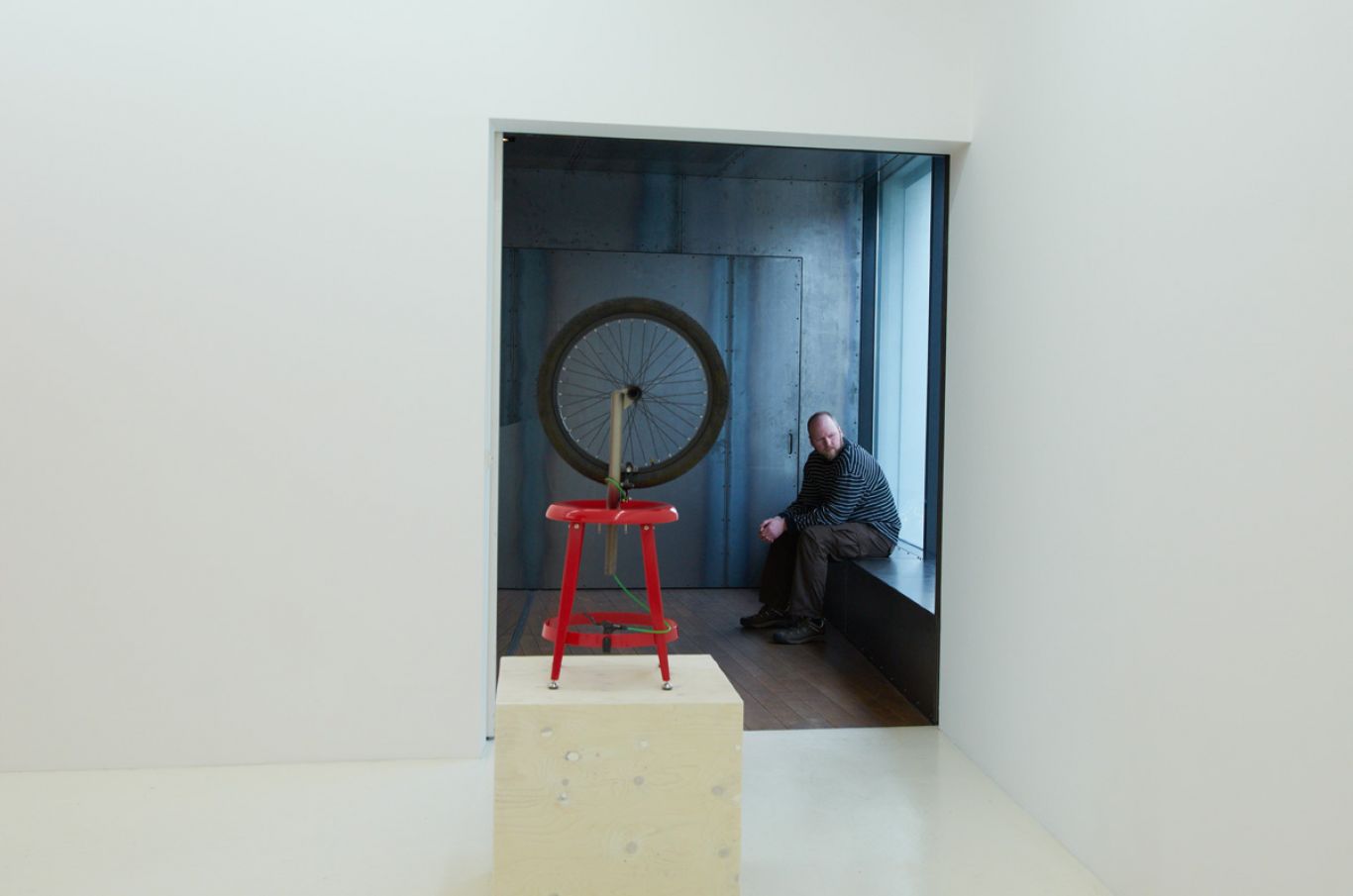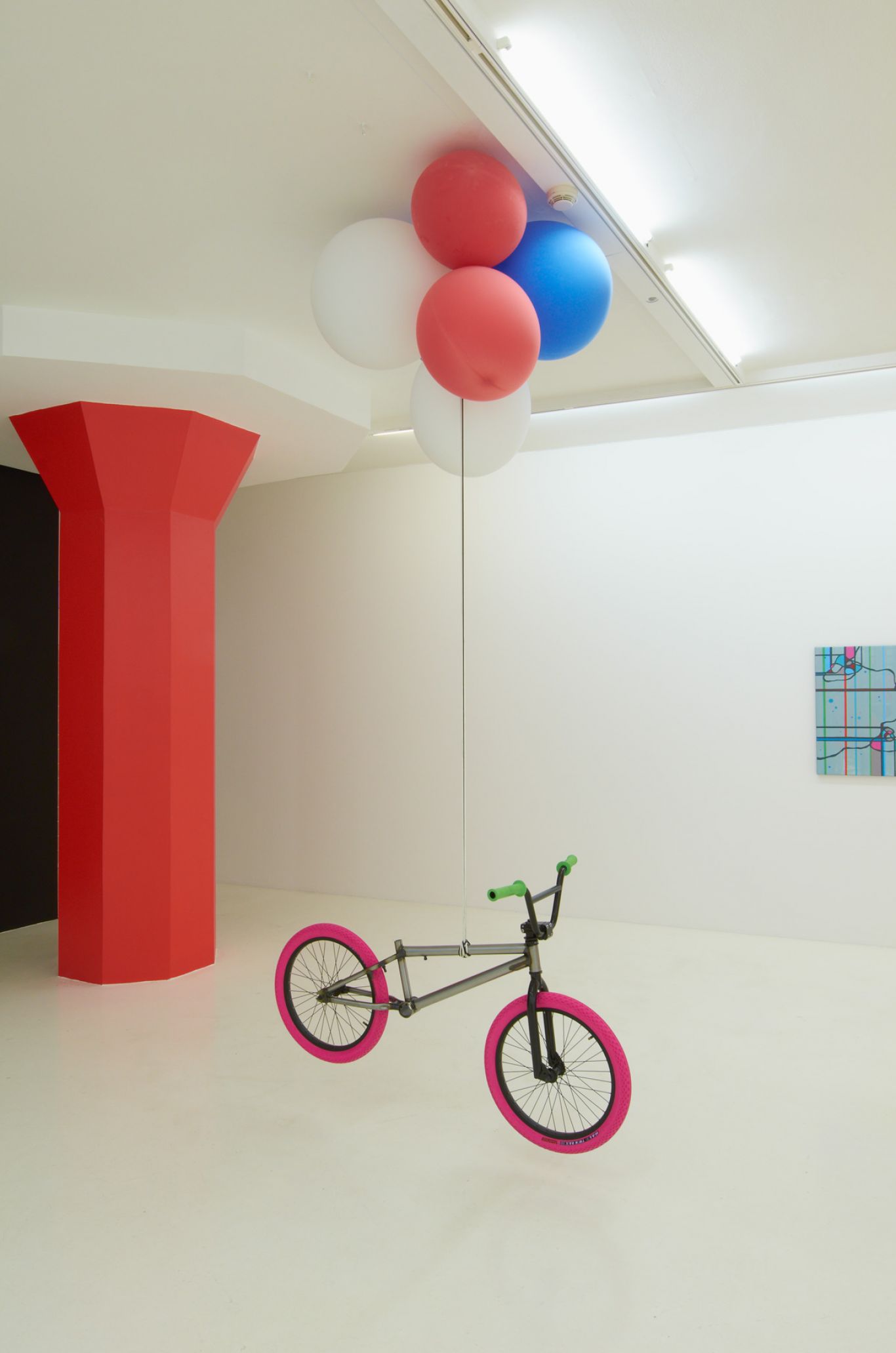Choose year
D20 Helgi Már Kristinsson
In Working Space published in 1986, Frank Stella, a prominent American abstractionist artist wrote: “The trouble in which recent abstraction finds itself, its inability to project a real sense of space, is rooted in its subservience to the surface and spatial continuity implied by Impressionism. In order to guarantee itself the completeness and wholeness that defines or better delimits art, abstraction has shunned reality—that is, it has shunned real, created space in favor of artificial, illustrated space. The answer to this problem is not to return to conventional illusionistic space, to Albertian perspective; but some kind of turning around is in order.” (page 46)
For many years, Helgi Már Kristinsson (b. 1973) has been intrigued by lines and colours, and their relationships with flat and delineated surfaces. In his teens, he was exposed to street art, or graffiti in Kopavogur, an industrial town where Helgi Már recalls spending a large amount of time cycling around in streets, through tunnels and under bridges in search of the latest spray paint work. He describes his paintings by referring to his recollections of close-up observations of edges set against different shades of backdrops that are walls, fences or billboards. And eventually, Helgi Már’s lines transform into shapes and acquire certain rhythms that seek to break from barricaded surfaces. He has experimented with lines and colours that expanded and extended from his paintings into actual physical spaces. In Chain Reaction, Helgi Már brings his paintings to face his core inspirations by creating a space and perspective to rationalise the irrationals, and vice versa.
Helgi Már lives and works in Reykjavík. He graduated from the Iceland Academy of the Arts in 2002 and has since shown in solo and group exhibitions.
Click on the pictures to view some more on Instagram and post your own by using the #hashtag of the exhibition.
Remember to follow Reykjavík Art Museum on @reykjavikartmuseum.



















